Disclosure: Meeple Mountain received a free copy of this product in exchange for an honest, unbiased review. This review is not intended to be an endorsement.
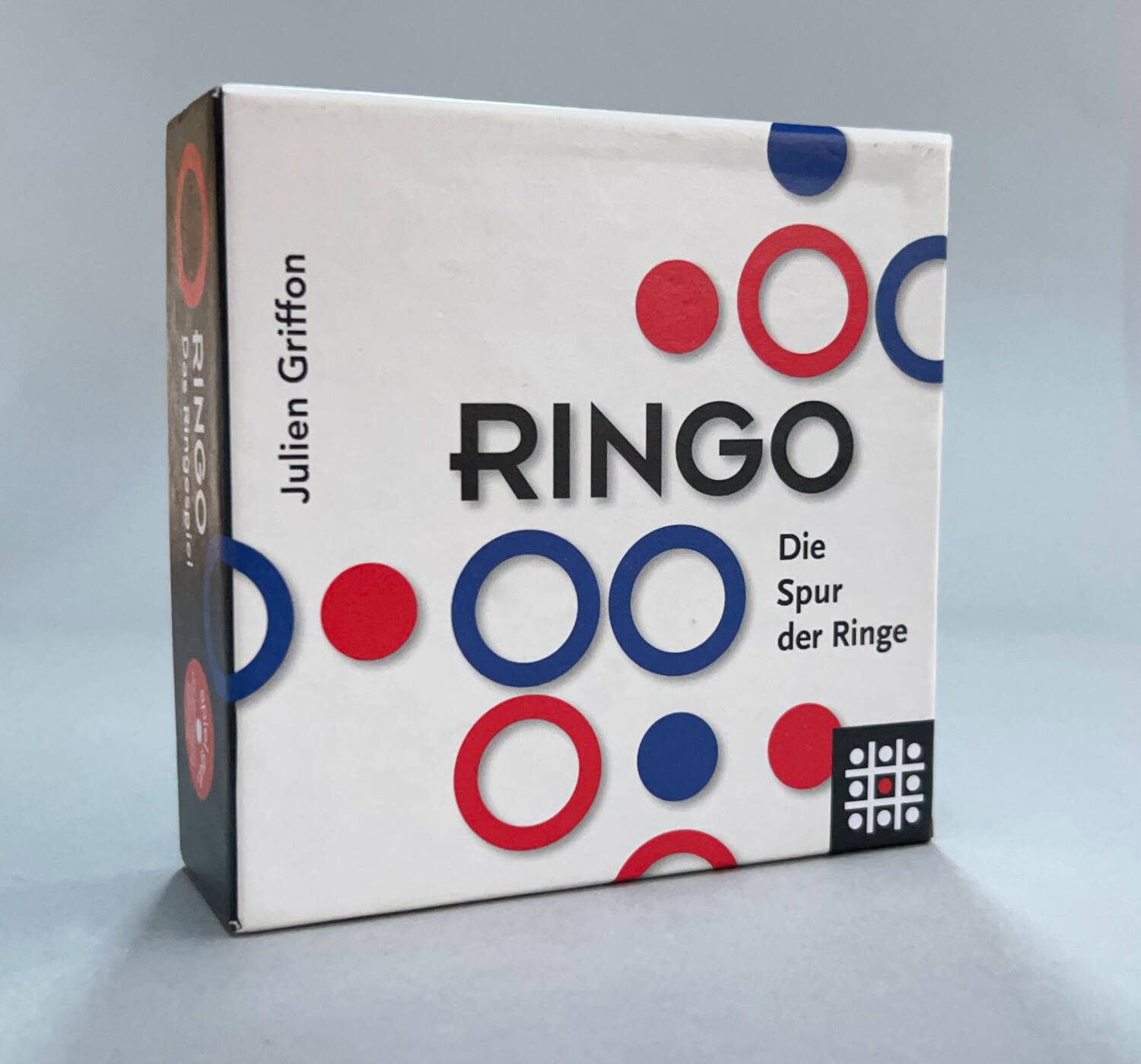
Ringo is a small box abstract from Steffan Speille, a publisher we here at Meeple Mountain admire for their dedication to producing well-crafted, clever games. Ringo carries on this tradition quite handily, as you’ll soon see.
Setup
Players choose either red or blue, then take the 10 wooden discs and four aluminum rings of their color. Each player takes their aluminum rings and creates a square (with the center empty) with one color taking the four corners and the other taking the middle spaces.
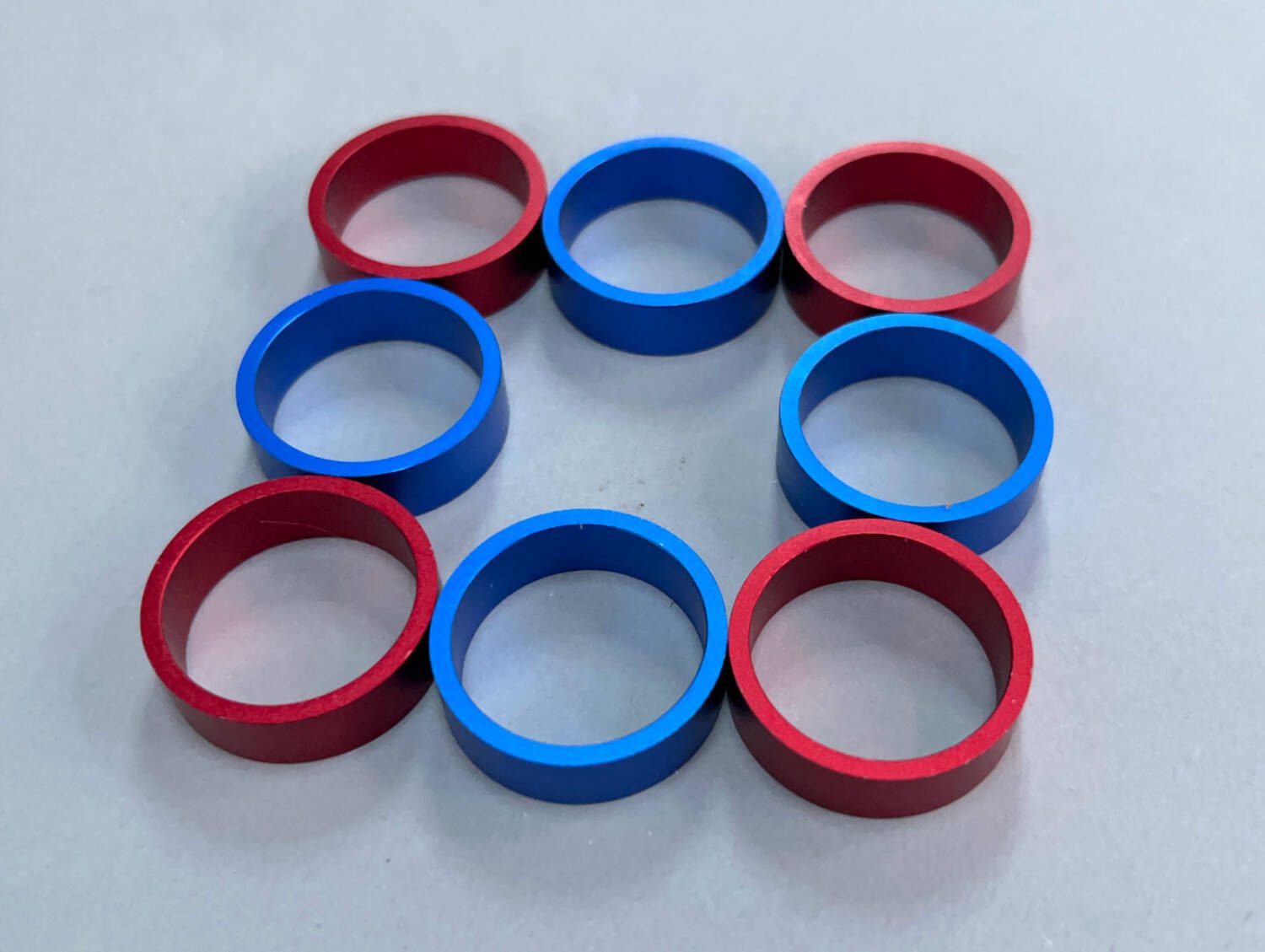
Simple, right?
Let’s Play
To win, you’ll need to create a four-in-a-row with either your discs or your rings—but not a combination of discs and rings. So, how do you get there?
On a turn, you’ll place one of your wooden discs in an aluminum ring—any ring, either yours or belonging to your opponent. You’ll then take that ring and move it to an empty location on the table such that it is touching any other aluminum ring. It can be either orthogonal or diagonal to the position of the new ring.
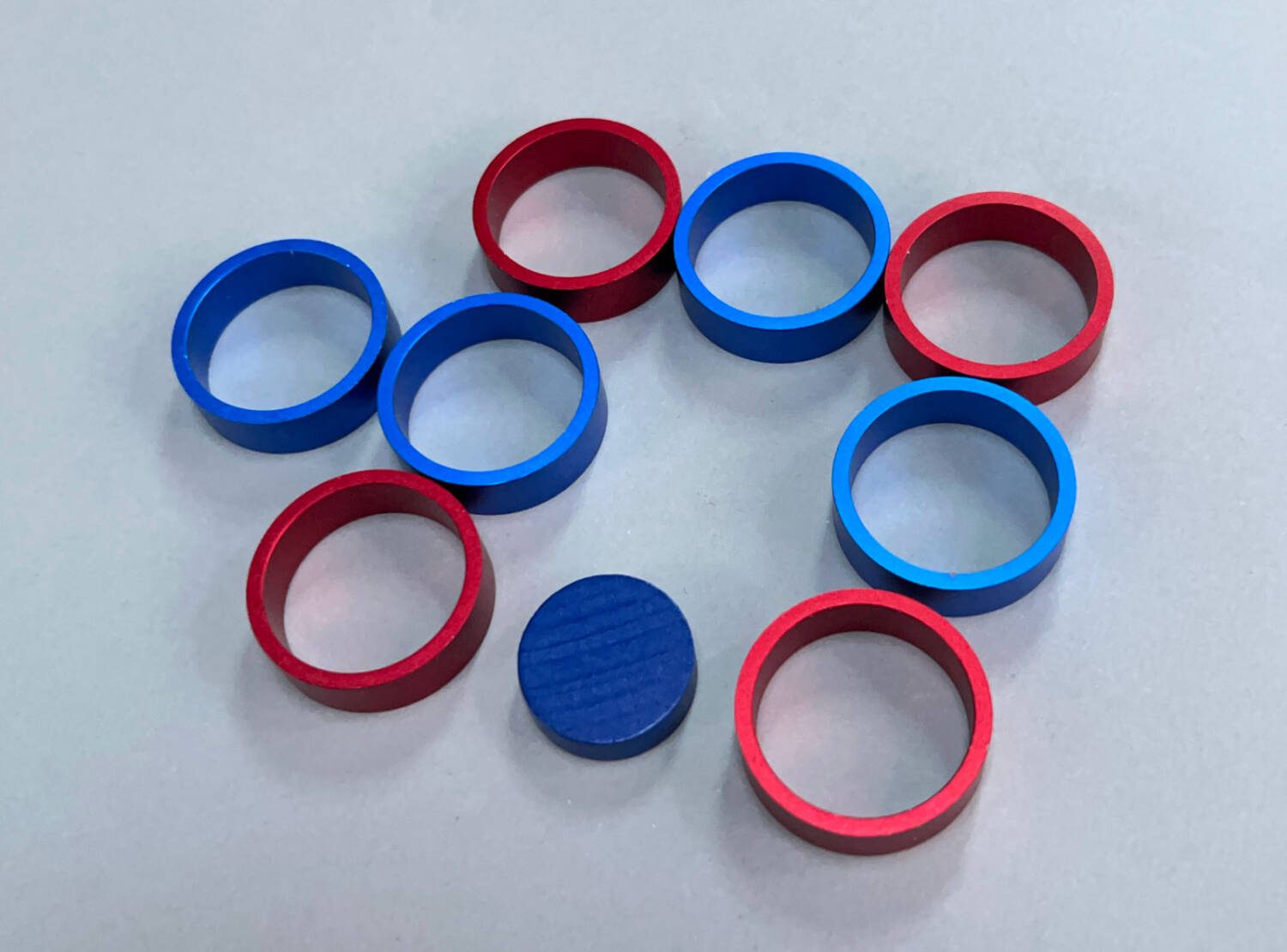
The only caveat to this is that the rings and discs must remain in a single connected group. You can’t move a ring that would disconnect/exile another ring from the rest of the group.
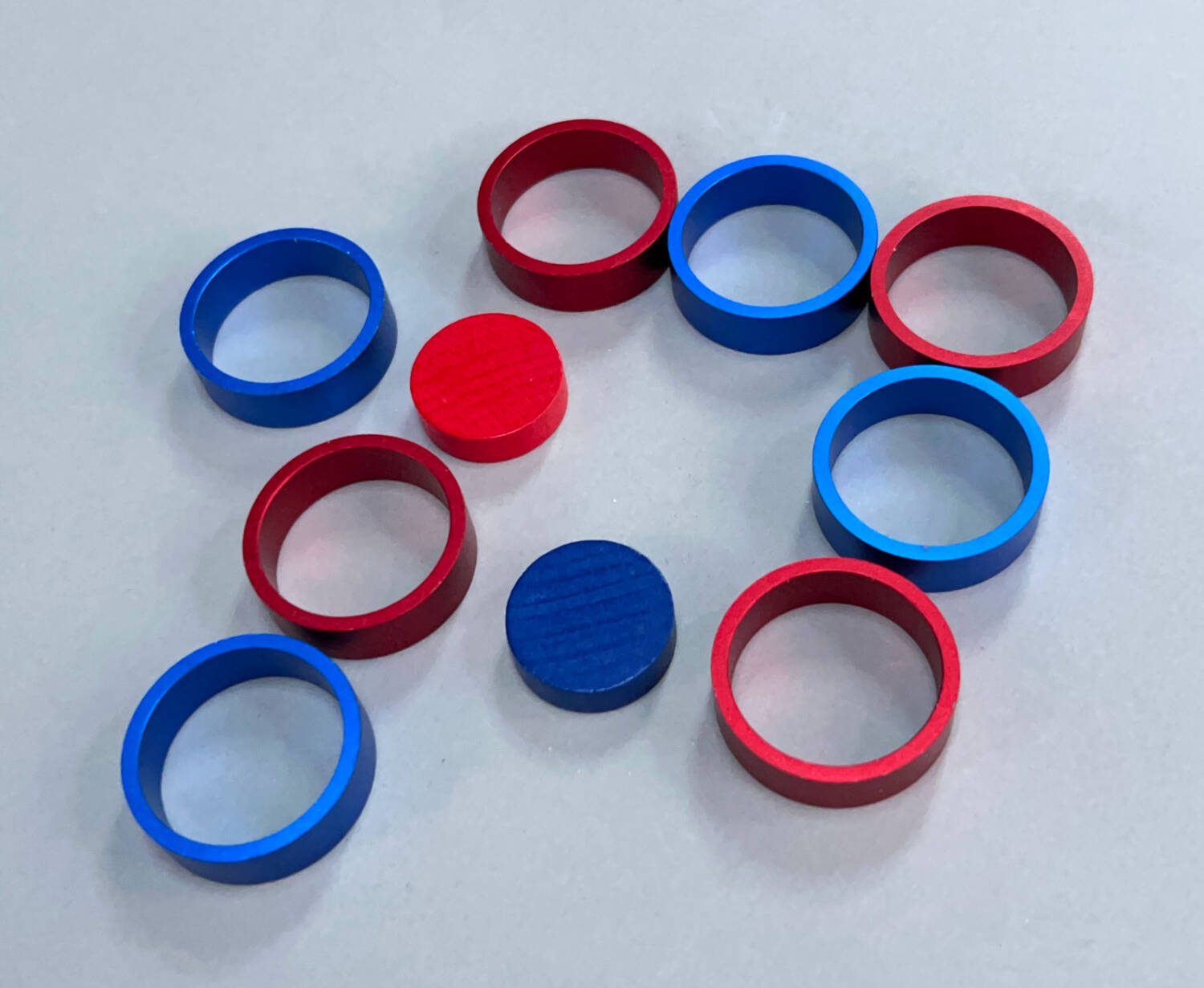
Chances are, you won’t have a winner by the time you’ve placed your tenth disc on the board. At that point, you must remove one of your previously placed discs and use it to complete your turn.
Thoughts
Three-in-a-row is a simple concept. Adding one to that to make four shouldn’t be that great of a difference—after all, even kids can play Connect 4. And in Ringo, you’re not even constrained by edges of a board to confine your moves.
And yet, Ringo shows that’s not necessarily the case. You’ll see its subtle complexity after only a few moves. Once a few discs are placed and rings change position, the openness of the playing field and the range of both offensive and defensive moves becomes apparent.
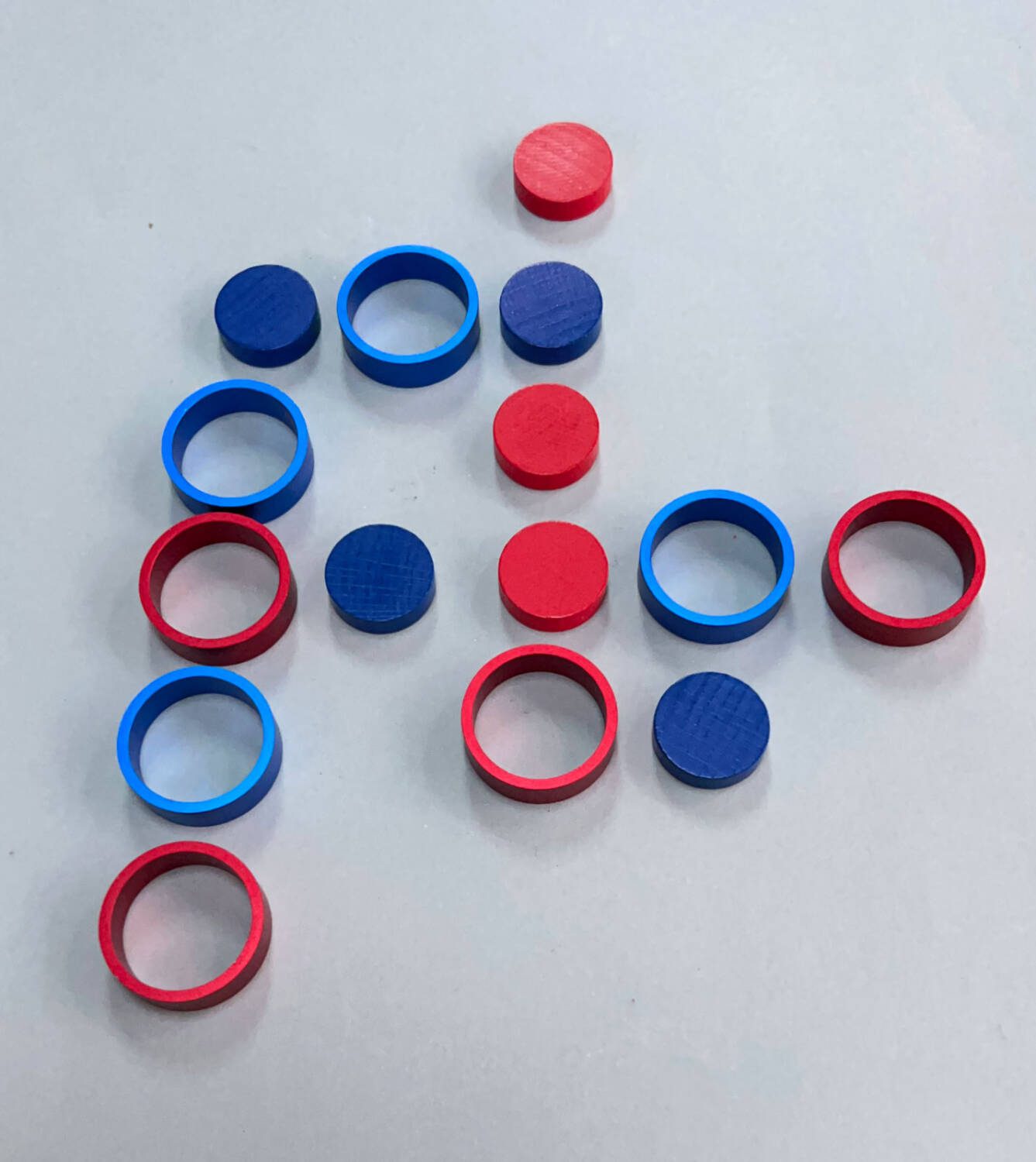
Whenever I’ve played Ringo with someone new, I’ve never played only one game. Through those many games, I’ve also never seen the layout of pieces evolve in the same way twice.
Ringo might seem like a simple game, but like a certain underappreciated drummer, the more you pay attention to it, the better it gets.


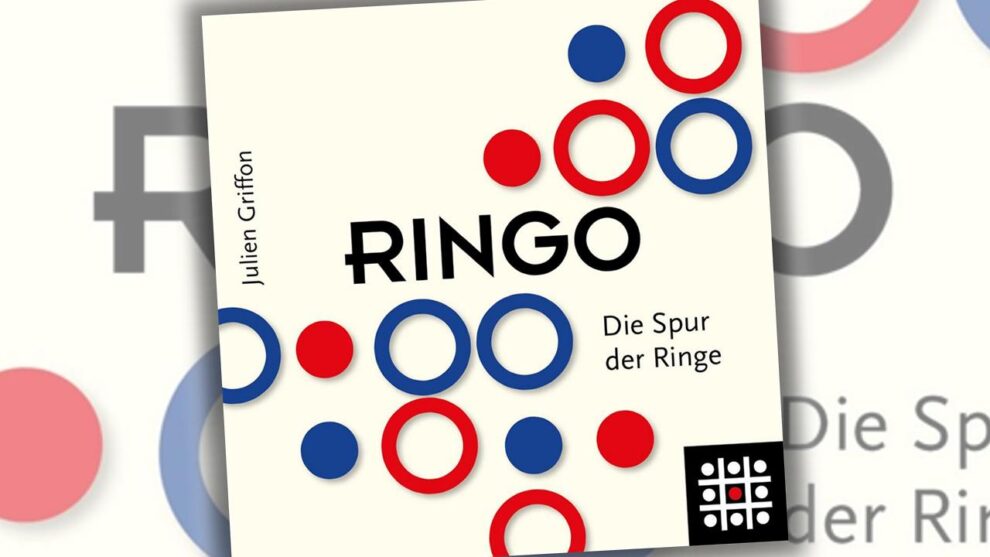








Add Comment